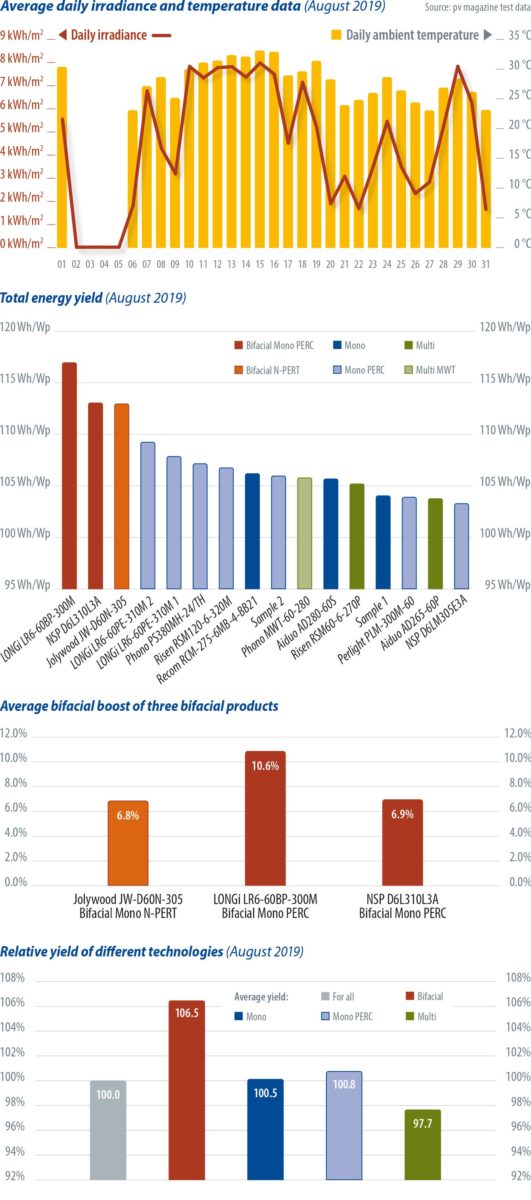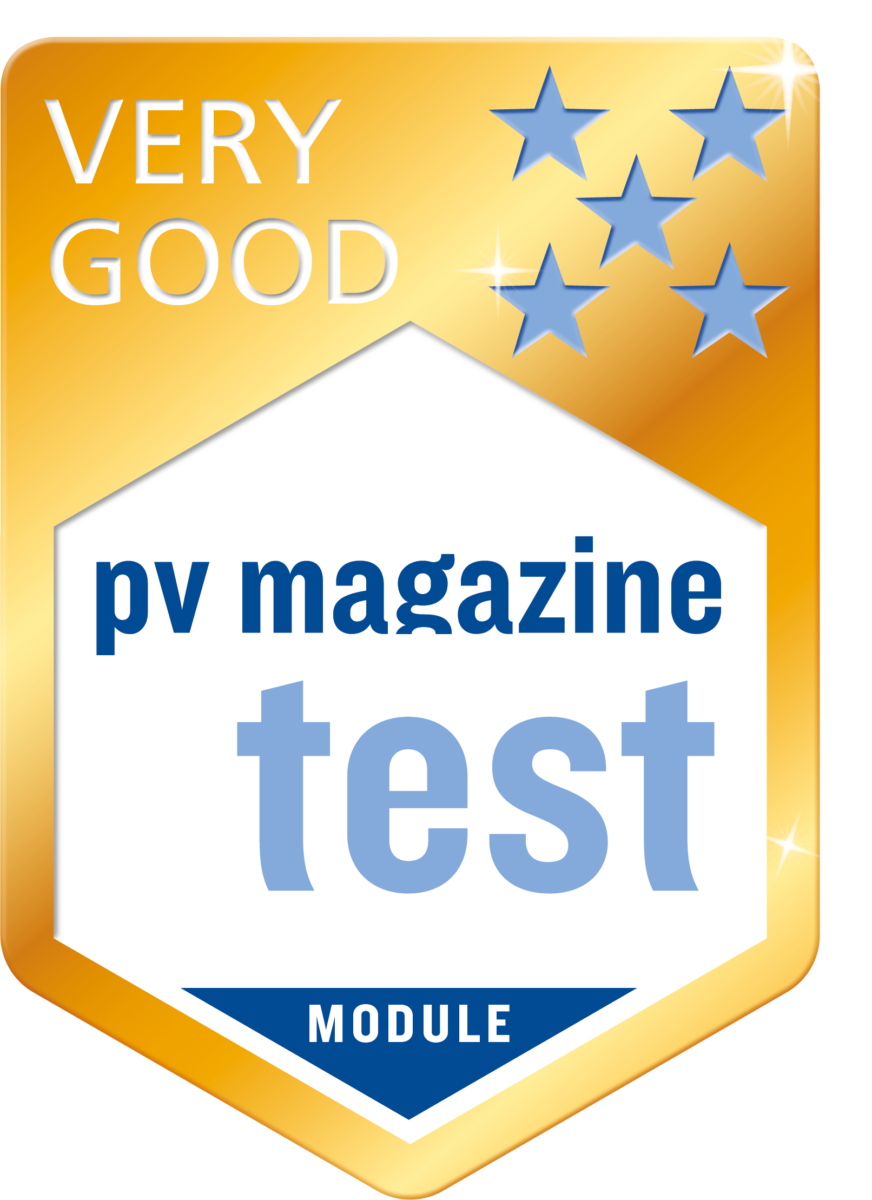The first chart to the right shows the meteo station data (irradiance and ambient temperature) for August 2019. The system was offline due to power cuts from Aug. 2 to Aug. 5.
On Aug. 7, the site background was changed from a uniform green-colored field to grey gravel (see photo), which is expected to boost the rear-side generation of the bifacial products. We will analyze the effect of the grey gravel in the next few months as we collect more data on the bifacial boost.
The monthly energy yield data for the months from March to August 2019 are given in the table below. The second chart to the right shows the total energy yield of all products for August 2019.
Two new products were added to the test. JinkoSolar’s mono PERC, half-cut module (JKM400M-72H) was installed on Aug. 12, and Longi Solar’s bifacial mono PERC, half-cut module (LR6-72HBD375) on Aug. 28. These two modules will be analyzed in the next month’s edition, after being tested for a full month.
The overall bifacial boost for August 2019 averages 8.1%. Bifacial boost is defined as the extra energy yield of the bifacial products compared to the average energy yield of all mono-facial products. Bifacial boost is calculated every day for each bifacial product. The third chart to the right shows the 27-day average energy yield boost of individual bifacial products.
The chart to the bottom right shows the comparison between different PV module technologies for August 2019. Bifacial modules are steadily performing above the average energy yield level, with multi-crystalline silicon PV performing below the average energy yield level. George Touloupas
We are pleased to present the next batch of energy yield results from the outdoor test field at Xi’an, China. The results from August 2019 are presented below, alongside analysis from George Touloupas, director of technology and quality at CEA.

Test cooperation
pv magazine test is a cooperative effort involving pv magazine, CEA and Gsolar. All testing procedures are carried out at Gsolar’s test laboratory in Xi’an, China. CEA supervises these tests and designed both the indoor and outdoor testing procedures.
Notes on the energy yield measurements:
- The energy yield is given in Wh/Wp and calculated by dividing the energy produced by the module by the Pmax at STC of the module. This Pmax is the maximum STC power after a process of stabilization.
- The results are grouped in categories, per module type.
- The bifacial boost depends on many parameters: the bifaciality factor, the installation geometry, the albedo of the ground, and also the sun angle and diffuse irradiance. The ground in this case is a plastic cover simulating green grass.
This content is protected by copyright and may not be reused. If you want to cooperate with us and would like to reuse some of our content, please contact: editors@pv-magazine.com.
